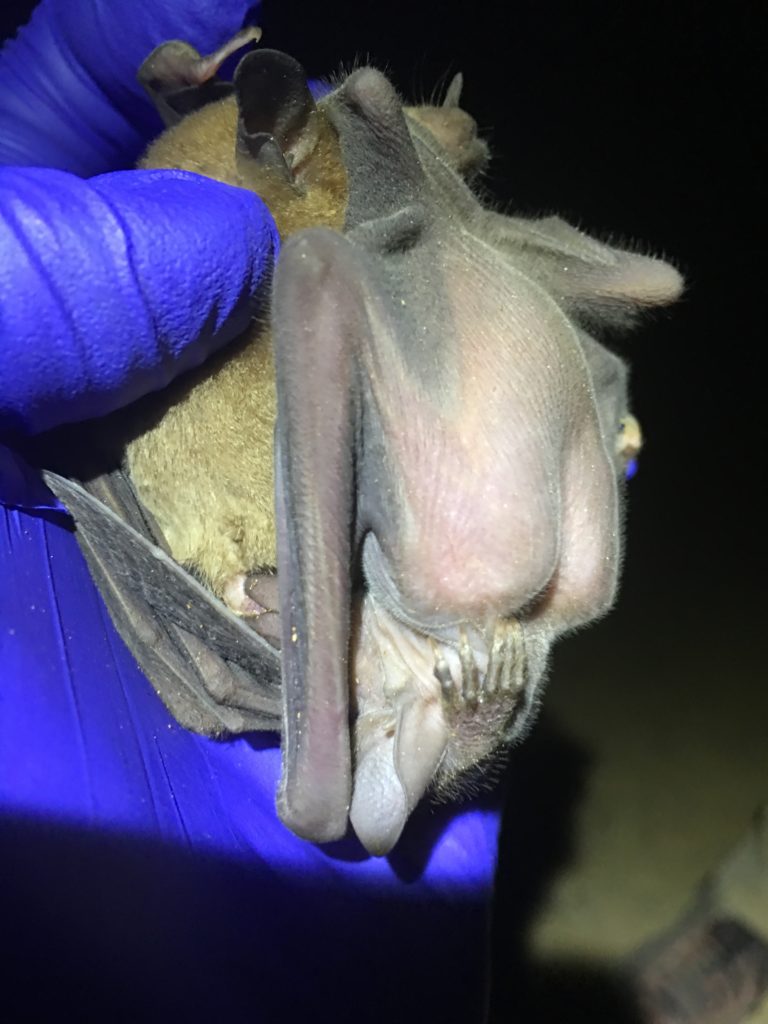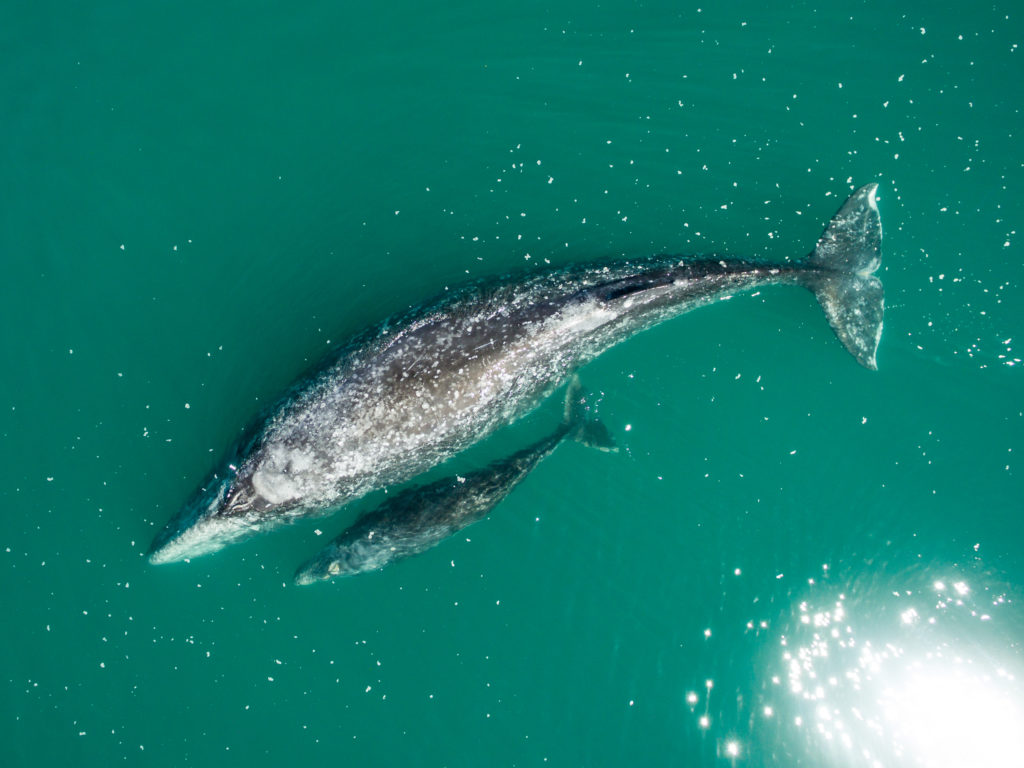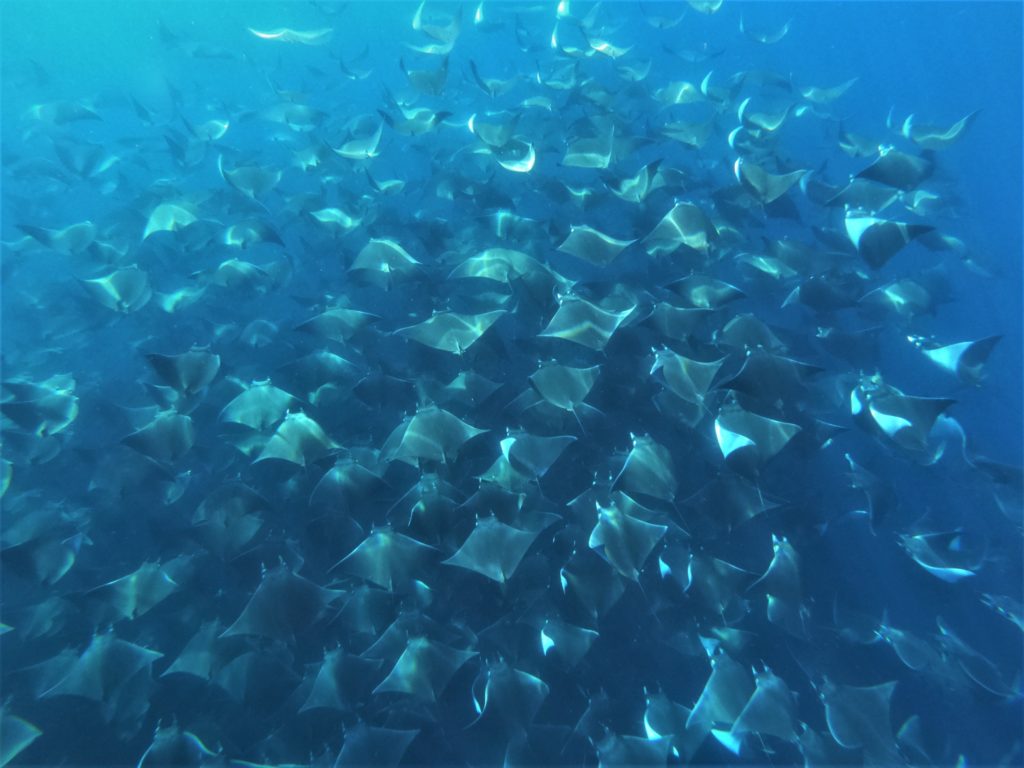It’s the time of year when droves of homo sapiens inhabiting the upper section of the North American continent give themselves over to the irrepressible urge (what scientists might call a life-preserving instinct) to seek out the warm sand and cool vibes of Baja California Sur. Following the great highway routes mapped out by their ancestors, they migrate south in their Volkswagen campers, Airstreams, and Harleys, the miles made short and their dreams made large by the great beach music of their elders. When they arrive there is much feasting and celebrating (in a greatly reduced version of their native garb) as they share stories of their great migrations, some of which are over 4,000 miles long!

The neighbors are unimpressed. Take the North Pacific loggerhead sea turtle (Caretta caretta) for example. These loggerheads begin life on the shores of Japan, and many appear content to spend the balance of their days foraging for crab, jellyfish and other delicacies in the central Pacific. But just as with our homo sapiens, there are some outliers among the loggerheads who feel the irresistible pull of Baja California Sur, and swim 9,000 miles (14,500 km) to the waters of Baja in nothing more than the shell they were born in. Being cold-blooded, loggerheads need warm water to survive, yet this epic journey requires them to pass through 6,000 kilometers of water between Pacific basins that is so cold that Charles Darwin himself pronounced it “impassable” for the likes of sea turtles. Many species, like coral, are unable to cross this divide, yet a small group of loggerheads regularly makes the trip.
For years this feat remained a mystery, with scientists simply unable to account for the Japanese-born loggerheads showing up in the abundant feeding grounds of Baja. Then they got focused, and between 1997 and 2013 researchers in Japan and the US tagged hundreds of adolescent loggerheads and published their findings in April 2021. It turns out that the young loggerheads migrate in the years when the ocean surface temperature is much warmer than usual due to natural phenomena such as marine heat waves and El Niño. These conditions create a thermal corridor that allows the young turtles to keep swimming in warm water all the way to Baja. Mystery solved!
But what prompted the scientists to get focused? Adelita of course. Adelita was a loggerhead turtle who was captured off the coast of Baja as a juvenile and raised in captivity. She was released in 1996 with a satellite tag attached to her back, and proceeded to amaze the world by traveling over 14,000 kilometers across the Pacific Ocean, becoming the first animal to cross an ocean basin while being tracked. It was Adelita who confirmed to scientists that the loggerheads seen in Japan, the central Pacific and Baja all belong to the same distinct population. It was Adelita who led to the knowledge that this population nests exclusively in Japan then spreads out across the Pacific to forage for food. It was Adelita whose journey prompted insight into the bold loggerheads who spend their youth in the blissfully warm, food-rich waters of Baja, then return to Japan at 20-30 years of age to continue the species. It was Adelita who transformed loggerheads into the stuff of migration legend.
 For its part, the lesser long-nosed bat (Leptonycteris yerbabuenae) may migrate only a few hundred miles each year from south-central Mexico to Baja California Sur, but the females of the species up the ante by doing it while heavily pregnant. According to Dr. Winifred Frick who has studied the bats of Baja for almost two decades, “In late March and early April the females follow the nectar corridor north from southern-central Mexico up along the Sinaloan coast, and we think they likely fly over the Sea of Cortez to the Baja peninsula. The lesser long-nosed bats are in the last stages of pregnancy when they make these spring migrations. Their feat is made all the more incredible when you realize that bat pups are roughly a third of the mother’s weight at birth – an enormous amount of extra baggage to carry on the migration route. The females then all give birth at the same time in mid-April in what is known as a synchronous birth pulse.” (It is generally acknowledged as a blessing that the migratory homo sapiens do not follow suit.) The babies nurse for 4-8 weeks, during which time it is not unusual for the mothers to fly 60 miles in each direction, each night, to their feeding grounds to obtain the nutrition needed for both mother and pup. Dr. Frick puts this feat into human terms. “It would be like leaving your newborn at home, jogging 60 miles to find a pop-up grocery store, eating all your meals at once, then jogging 60 miles home to your newborn.” In the process of feeding, the lesser long-nosed bats act as major pollinators for Baja California’s agaves and columnar cacti. When the cacti are pollinated and the babies are weaned, the cloud of bats then migrates back to the Mexican mainland. A very satisfactory migration job completed!
For its part, the lesser long-nosed bat (Leptonycteris yerbabuenae) may migrate only a few hundred miles each year from south-central Mexico to Baja California Sur, but the females of the species up the ante by doing it while heavily pregnant. According to Dr. Winifred Frick who has studied the bats of Baja for almost two decades, “In late March and early April the females follow the nectar corridor north from southern-central Mexico up along the Sinaloan coast, and we think they likely fly over the Sea of Cortez to the Baja peninsula. The lesser long-nosed bats are in the last stages of pregnancy when they make these spring migrations. Their feat is made all the more incredible when you realize that bat pups are roughly a third of the mother’s weight at birth – an enormous amount of extra baggage to carry on the migration route. The females then all give birth at the same time in mid-April in what is known as a synchronous birth pulse.” (It is generally acknowledged as a blessing that the migratory homo sapiens do not follow suit.) The babies nurse for 4-8 weeks, during which time it is not unusual for the mothers to fly 60 miles in each direction, each night, to their feeding grounds to obtain the nutrition needed for both mother and pup. Dr. Frick puts this feat into human terms. “It would be like leaving your newborn at home, jogging 60 miles to find a pop-up grocery store, eating all your meals at once, then jogging 60 miles home to your newborn.” In the process of feeding, the lesser long-nosed bats act as major pollinators for Baja California’s agaves and columnar cacti. When the cacti are pollinated and the babies are weaned, the cloud of bats then migrates back to the Mexican mainland. A very satisfactory migration job completed!
Given their enormous size and intelligence, it may not seem fair to bring gray whales (Eschrichtius robustus) into the Baja migration discussion. After all, over the average gray whale’s lifetime of annually migrating the roughly 12,000 miles roundtrip between the feeding grounds of the Arctic and the breeding grounds of Baja, they will have traveled the equivalent of a return trip to the moon. But the gray whales aren’t resting on their migratory laurels. In 2010 a gray whale showed up off the coast of Israel, then moved on to Spain before dropping off the scientific radar. Three years later a different gray whale swam the longest distance ever recorded in a marine vertebrate, more than 16,700 miles, lingering off the coast of Namibia for a bit before vanishing to parts unknown. (A leatherback turtle had previously held the world record of 12,774 miles across the Pacific. She couldn’t be reached for comment for this article.) National Geographic reports that scientists were so discombobulated by seeing gray whales on the wrong side of the world – they had never seen one outside of the Pacific Ocean before – that one compared the feeling to walking down a street in California and seeing a giraffe.
But these two whales just might just be the vanguard in a new migratory pattern for gray whales. Or, more precisely, the dusting off of an old one. Research suggests that millions of years ago gray whales lived in both the Atlantic and Pacific. The planet later cooled and an impenetrable Arctic barrier formed between the two populations, which then may have evolved into two distinct species. If so, then it is likely that the Atlantic gray whales are what naturalists of the 18th century called “scrag whales” and that they were decimated by the whaling industry while the Pacific whales survived. DNA and carbon isotopes from the bones of Atlantic whales proved to scientists that the Pacific and Atlantic gray whale populations are still closely related. In fact, it shows that the Pacific gray whale was responsible for colonizing the Atlantic Ocean, not just in a one-off, fluke event, but several times across the ages. As National Geographic puts it, the data proves that “Pacific gray whales have periodically swum across the Arctic Ocean and into the Atlantic and established populations that survived for millennia. The scientists can identify several waves of immigration. One took place about 79,000 years ago, and then three others happened more recently, between about 10,000 and 5,000 years ago.”

The loggerheads know how they did it: warm water, at least relatively speaking. 70,000 to 135,000 years ago the climate was so warm that the Arctic Ocean was open all year round, allowing the Pacific gray whales to freely migrate to the Atlantic. A new ice age cut off the Arctic once again, but when it ended 60,000 years later the Pacific gray whales renewed their Arctic passages to the Atlantic. A later cooling again closed the route, but now that the migrating homo sapiens are warming up the Arctic in record time, perhaps more gray whales will follow the lead of their friends spotted in Israel and Namibia, and strike out across the ice-free Arctic Ocean, looking to colonize the Atlantic once again.
Migrations long and short are a theme of life in Baja. In March and June thousands of mobula rays congregate to mate in the Sea of Cortez bays around La Paz and La Ventana, then migrate over 300 miles to the Pacific side of the peninsula. In spring and autumn each year the small Red Knot bird (Calidris canutus roselaari) follows the Pacific Flyway 9,300 miles from the Arctic to Tierra del Fuego – then back again – bulking up on nutritious grunion eggs along the Sea of Cortez each way. No matter the species or their origin, the migrators are part of the magic pull and thrill of Baja as we marvel at and celebrate their victories over incredible obstacles to reach the peninsula’s life-giving shores. As Thoreau may have mused, the homo sapiens who migrate to Baja may find that it is not the margarita they sought but the tonic of wildness they found of which they can never have enough. And that is as life-affirming a reason for migration as ever there was.

Notes:
- Thanks to Jose Sanchez of PureBajaTravels.com for inspiration on gray whale travels through the Arctic.
- Details on the scientific research related to gray whale migrations across the Arctic came from Carl Zimmer’s article in National Geographic, Whales on the Wrong Side of the World.
- The Stanford study on loggerhead turtle migrations was originally published in Frontiers of Marine Science.
Todos Santos Eco Adventures (TOSEA) is the leading eco adventure company in Baja California Sur. TOSEA invites you to join them in the following initiatives to help preserve the habitats of Baja California that both our native and migratory species depend on:
Carbon Capture with Tomorrow’s Air. TOSEA is a carbon capture education partner with Tomorrow’s Air, and to date has supported the removal of one ton of carbon dioxide from the air. All homo sapiens who migrate to Baja are invited to join TOSEA in supporting this incredible project that was awarded Newsweek’s 2021 Future of Travel Award in the Visionary category
– it is not carbon offset, it is actually removing CO2 from the air and storing it deep underground. www.tomorrowsair.com.
Zero Waste Alliance of Todos Santos and Pescadero (ZWA). TOSEA is a proud supporter of the ZWA which is actively working to reduce the amount of waste that goes to the local landfill and build circular economies around that waste. All homo sapiens, both native and migratory, are invited to join the movement! www.facebook.com/alianzacerobasuratodossantos
